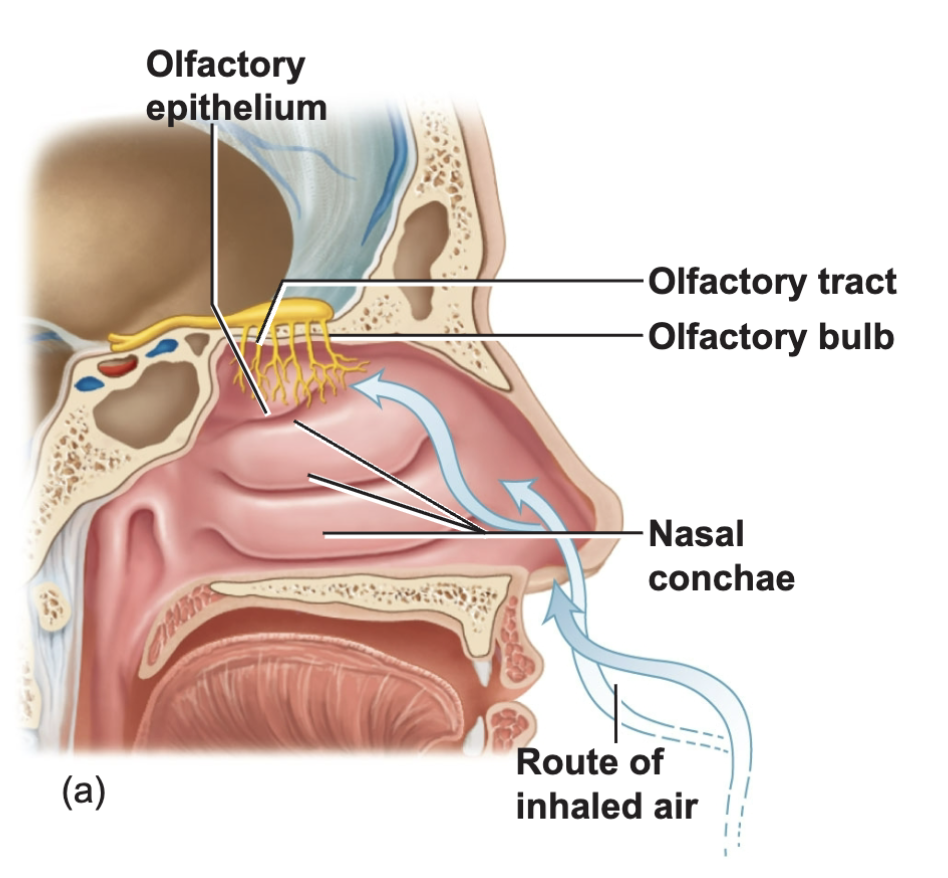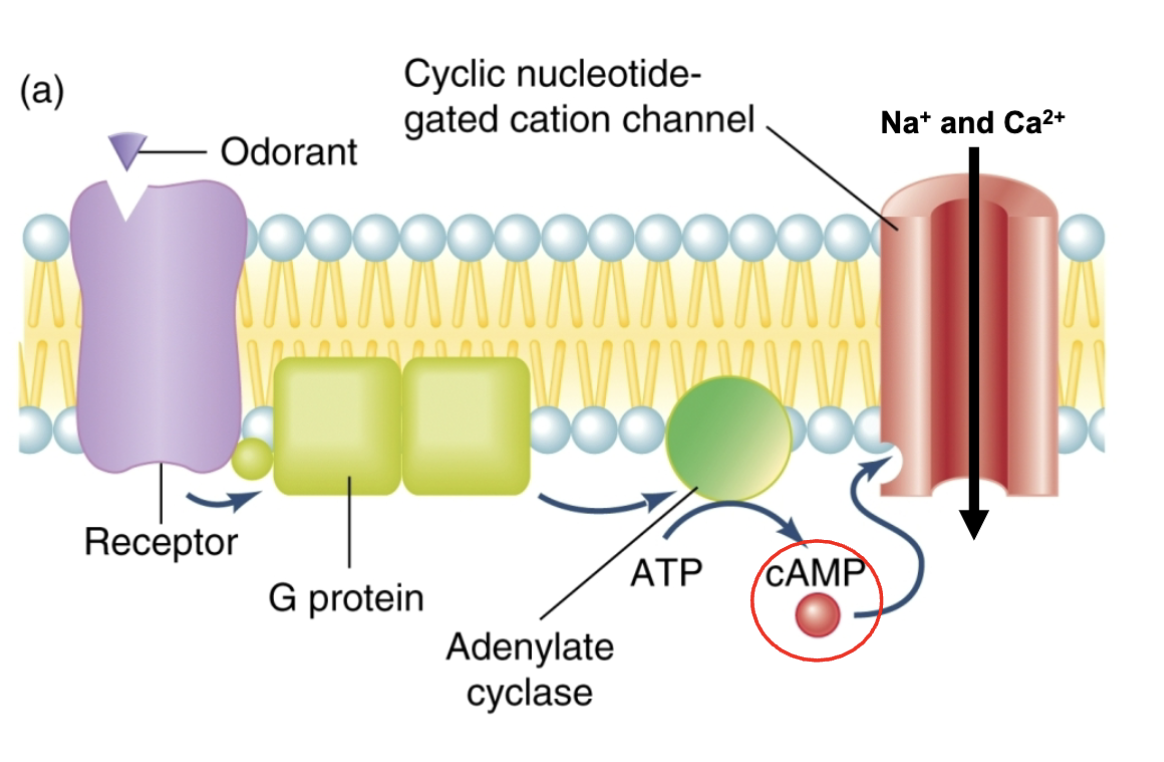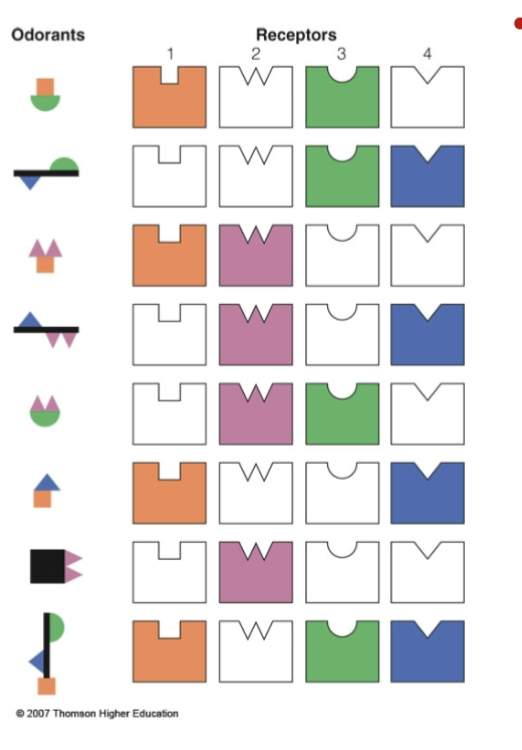Smell - chemoreception
1/7
There's no tags or description
Looks like no tags are added yet.
Name | Mastery | Learn | Test | Matching | Spaced |
|---|
No study sessions yet.
8 Terms
function of smell
food selection
mate selection
pheromones: smell of animals that attract to mates
receptors of smell in nose
inhaled air goes through nasal conchae and is sent up to olfactory tract, bulb, epithelium which are what detect odorous chemicals
bipolar neurons; ciliated dendrites
Proteins in cilia bind to odors

olfactory reception in nose
chemical binds to receptor protein and then opens up ion channels

olfactory processing
glomerulus: cluster of neurons that recieve info from the receptor cells with similar selectivities; 1st place of sensory processing
olfactory epithelium contains olfactory receptor cells
from this it goes to mitral cells
abt 25000 receptor cell axons synapsing on abt 25 mitral cells
how smell works
odor binds to receptor protein: G-protein coupled
Activated G-proteins activates adenylate cyclase to make cAMP
cAMP opens Na and Ca channels
results in graded depolarization which triggers AP
combonational code for odor
odorants are coded by combos of olfactory receptors: across fiber patterning
specific receptors may be part of code for multiple odorants
ex: we have 26 different letter in the alphabet, you can have multiple combonations of these letters to create words
each word has different meanings tho

the perception of flavor
perception of flavor comes from the combonation of smell, taste, and other sensations (such as burning a lot of peppers)
odor stimuli from food in moth reaches olfactory mucosa through retronasal route
taste of most compounds is influenced by smell
the puzzle of olfactory quality
there are abt 350 functional genes coding for different olfactory receptors in humans: each gene for 1 receptor
therefore each receptor is best “tuned” to 1 of 1000 different chemical “types”
what these types are are still not clear nor is how the code gets turned into a “smell”
maybe combinational code?